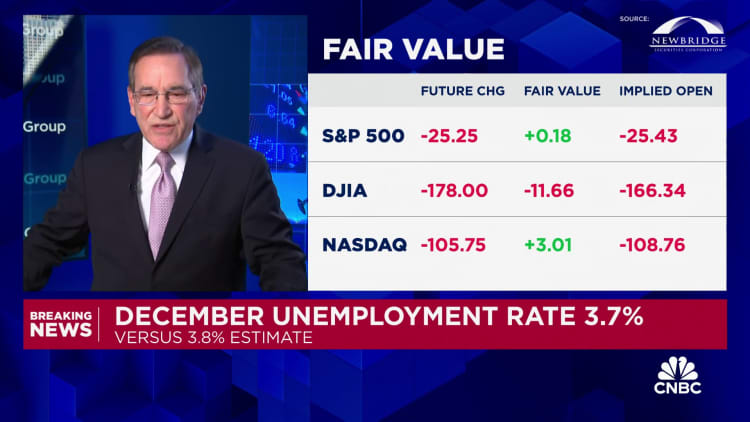Workers are poised to get smaller raises in 2024 — and their annual pay bumps are unlikely to increase again anytime soon amid a cooler job market, labor experts said.
U.S. companies plan to give salary increases of 4%, on average, this year, down from 4.4% in 2023, according to a survey by Willis Towers Watson.
Similarly, a Mercer poll indicates companies' total salary budgets, which include money for all pay increases, such as raises and promotions, will be 3.8% in 2024, on average. That's down from the 4.1% paid out last year.
More from Personal Finance:
States step in to fill the 401(k) void
Job data shows the 'haves and have nots' of labor market
2024 is the 'year of globetrotting.' Here are some hot spots
"We certainly think it will continue to come down," said Lauren Mason, senior principal in Mercer's career group. "But how much it does is a big open question at this point."
That said, the current forecast isn't paltry by recent historical standards. Raises averaged about 3% a year following the 2008 financial crisis, experts said.
How supply and demand affect raises
Supply and demand of labor is the No. 1 driver of company decisions regarding raises, said Lori Wisper, who leads Willis Towers Watson's work and rewards global solutions unit.
The demand for labor exploded in the spring of 2021 as the U.S. economy reopened from its pandemic-era doldrums. But the labor supply (i.e., available workers) was limited.
Workers had ample opportunity as businesses clamored to fill jobs. Companies raised wages at the fastest pace in decades to compete and attract talent.

During this era, known as the "great resignation," workers had the luxury of being able to easily quit their jobs and get new ones with much higher pay. Companies also doled out more generous raises to existing workers to retain them.
"We had people changing jobs like wildfire," Wisper said. "Retention was everything."
"That might be a once-in-a-lifetime labor market," she added. "We might not see that again."
Now, the job market has cooled from its torrid pace in 2021 and 2022. However, data suggests it remains strong relative to pre-pandemic norms.
Companies generally must balance two competing priorities when choosing how to boost pay, experts said. That means being conservative enough so as not to overextend one's budget — in which case future layoffs are likely — but generous enough that the company remains competitive and doesn't lose workers due to poor pay.
The former dynamic was on display in 2022 and 2023 when some of the nation's biggest technology firms announced mass layoffs. Some of those represented an unwinding of overzealous hiring early during the Covid-19 pandemic.
Companies don't often increase their average raises, making 2022 "notable" when it breached 4%, Wisper said. For multinational companies, going from 3% to 4% on average might represent tens or hundreds of millions of dollars, she added.
Of course, annual raises exceeded 4% — and even approached 5% — before the 2008 financial crisis, but then declined after the economic downturn, she said.
Don't miss these stories from CNBC PRO:
- These stocks will be the biggest S&P 500 winners of 2024, according to analysts
- Here's where to invest $50,000 in the new year, according to the pros
- Could a bitcoin ETF approval be a sell-the-news event? Here's what to expect if it happens
- These stocks will be the biggest Dow winners of 2024, according to analysts
- Oprah's flip on weight loss drugs is a sign of what's to come for the 'Ozempic trade' in 2024


